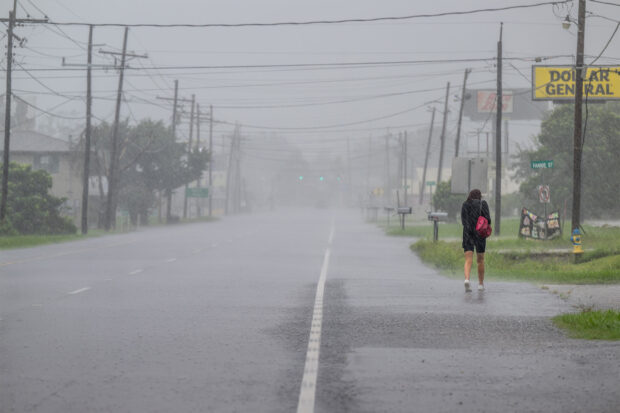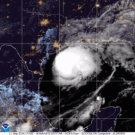Hurricane Francine weakened after slamming into the coast of southern Louisiana with 100 mile-per-hour winds.
The storm made landfall in Terrebonne Parish as a Category 2 hurricane at around 6 p.m. Eastern time Wednesday, but wind speeds rapidly fell to 70mph, making it a tropical storm, the U.S. National Hurricane Center said. It could be downgraded further to a tropical depression by late Thursday, it said.
Francine marks the end of an unusual lull in the Atlantic hurricane season, which went quiet in late August just as it normally approaches its peak. After several weeks of low activity, meteorologists are now tracking five storms or potential storms in the central Atlantic basin, including Francine.
More than 325,000 customers in Louisiana are without power, according to Poweroutage.us. At least 240 flights in Houston, New Orleans and Baton Rouge were canceled, according to FlightAware, an airline tracker.
Hurricanes often lose some steam as they approach land, cut down by “wind shear,” or local winds moving in the opposite direction of the storm. But Francine managed to gain strength before striking Louisiana, said Alex DaSilva, lead hurricane expert for AccuWeather.
“A lot of that has to do with the extremely warm temperatures in the Gulf of Mexico,” DaSilva said. “Ocean heat content essentially is the depth of the warm water — how deep that extends down below the surface of the ocean. That’s at record levels for this time of the year.”
The storm will not make a direct hit on any of the region’s major natural gas export plants. Oil and gas companies had previously evacuated some offshore platforms in the Gulf of Mexico and shut in nearly 39 percent of oil production and 49% of gas production as a precaution.
Francine likely will cause $2 billion to $3 billion in damages and losses, said Chuck Watson, a disaster modeler with Enki Research.
This is now the third hurricane to strike mainland U.S. in 2024, making it the ninth year since 1900 that has happened by Sept. 11, Phil Klotzbach, a hurricane researcher at Colorado State University, confirmed in an email to Bloomberg News. That’s partly because the storms that formed this year have developed in the central and western parts of the Atlantic basin.
Francine is expected to drench the southeastern U.S. with heavy rainfall, which could cause flooding as far east as the Florida Panhandle.
(Photo by Brandon Bell/Getty Images)





















 Executives on the Move at HSB, American Modern Insurance Group, AIG
Executives on the Move at HSB, American Modern Insurance Group, AIG  The Hardest Part of Innovation in Insurance Isn’t Technology; It’s Culture
The Hardest Part of Innovation in Insurance Isn’t Technology; It’s Culture  The Latest Launches from Allstate, WTW, Whisker Labs
The Latest Launches from Allstate, WTW, Whisker Labs  Truckers Who Fail English Tests Are Pulled Off Roads in Crackdown
Truckers Who Fail English Tests Are Pulled Off Roads in Crackdown 
